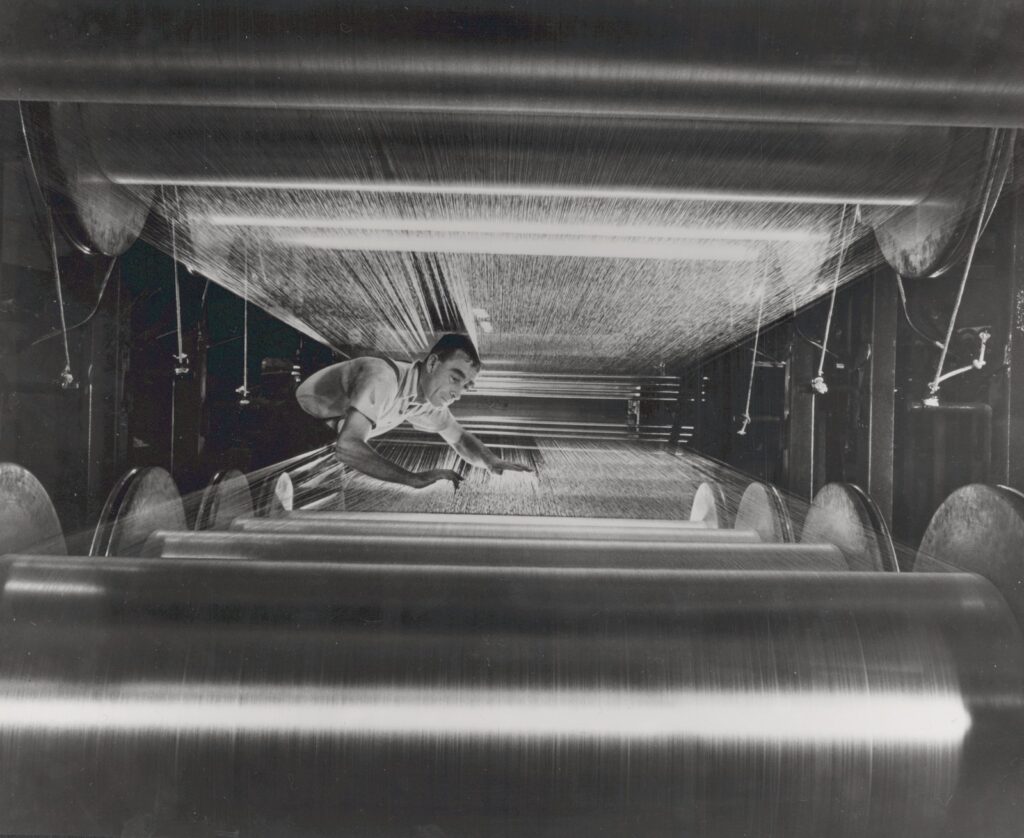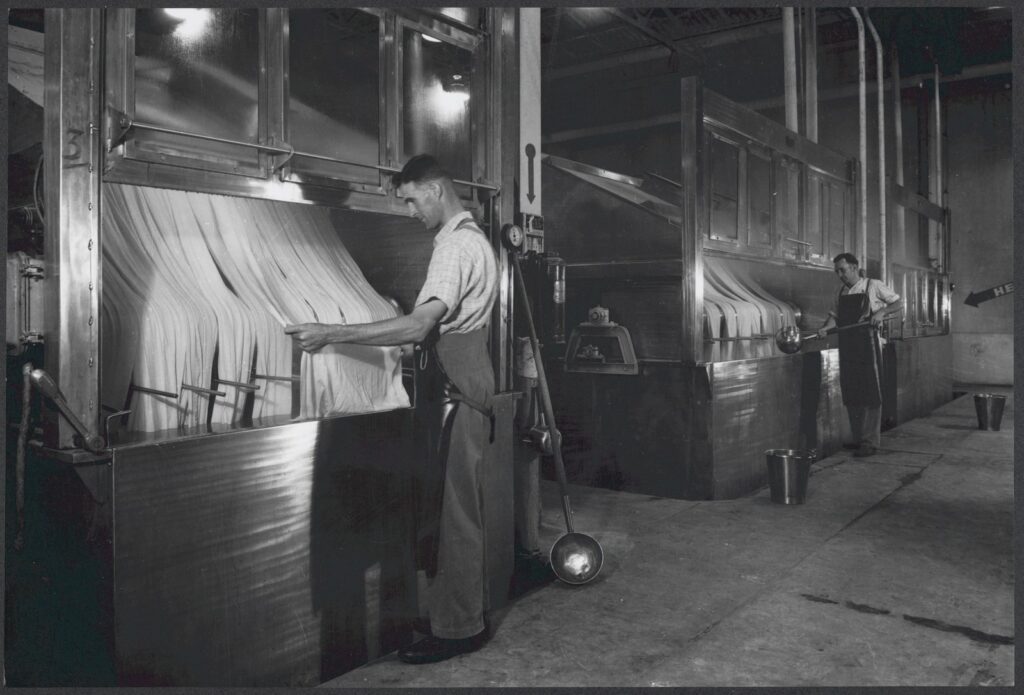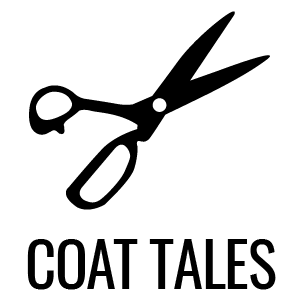In 1950, photographer Wolfgang Sievers travelled to Bruck Mills in the Victorian town of Wangaratta. The mills produced rayon, a fabric likened to silk that was in fact made from chemically treated cellulose. Sievers took a series of black and white photographs of the mills’ workers in action. His photographs, dramatically lit with striking industrial lines, echo the photography for which he became best known.

Executives from Montreal-based Bruck Silk Mills had travelled to Australia in 1945 to consider where they would establish a new rayon weaving mill. They intended that Canadian rayon experts would come to Australia to train a local workforce, initially 500 strong, importing the necessary machinery and equipment. Newcastle was flagged as a potential site, though when the announcement was made by John Dedman (who features in my earlier posts), Minister for Post-War Reconstruction, in March 1946 it was the Government-owned Wangaratta aluminium rolling mills that had been selected for rayon production.
This was exciting news for the town’s residents. It promised to increase employment and attract new workers. Victoria’s Premier, John Cain (senior – not to be confused with his son of the same name, who served as premier between 1982 and 1990), pledged state government co-operation, noting that 250 new houses would be needed. Public interest was significant, but as Australia had imported rayon before the war there seemed some uncertainty about what it actually was.
Melbourne’s Argus newspaper aimed to alleviate any confusion, explaining it in simple terms as:
a synthetic yarn made from wood pulp chemically treated and extruded through fine holes or nozzles. It is a continuous fibre the size or denier of which can be determined by the size of the fine holes through which it is extruded.

Rayon, also known as artificial silk, art silk or imitation silk, had been patented in France in 1885, but its manufacture flourished during and after First World War and in the Second World War when silk supplies were limited – Australia’s major supplier was Japan.
Australia’s large rayon imports were second only to the amount of cotton and linen being imported into the country in 1939, so the post-war establishment of an Australian mill was especially welcome. So too was the potential for the use of rayon in clothing. It could be dyed vivid colours and had good draping qualities. On a more practical level it was soft but durable, with a long life. As technology improved, it could be made cheaply.
Rayon was closely linked to women’s fashions, but not exclusively. In the early 1950s, the popular Australian magazine Man alerted its readers to a new trend for casual printed shirts for weekend wear. Made from rayon, the magazine explained how African, Hawaiian and Calypso motifs were popular. Rayon gaberdine blends were stylish, too, with the benefits of being ‘fadeless, launder[ing] like new, and will last quite a long time.’
Rayon could also be combined with woollen yarn, making a high-quality fabric used for men’s suits. Following the trend in America, Man explained in 1952 how:
The new rayon materials combine the best features of suiting: durable, non-shiny, fray-resisting, they offer warmth, smoothness and light weigh, all in the one package. They hold their shape and creases, too.
Six years after Sievers captured rayon production at the mills, he photographed the newly opened Bruck Mills showroom at 118 Flinders Lane, in the heart of Melbourne’s ragtrade. His photographs document the showroom’s modern design and sharp lines, and its reference back to the Wangaratta mills: an image of spools of thread runs dramatically from floor to ceiling across the length of the back wall.
References
‘Business Men Back with Plans for New Industries’, Sun (Sydney), 27 October 1945, 2.
‘Country Industry Needs More Houses’, Argus (Melbourne), 15 March 1946, 14.
‘Imports’, The Textile Journal of Australia, 15 April 1939, 91.
Donald Coleman, ‘Man-Made Fibres Before 1945’, The Cambridge History of Western Textiles Vol. 2, ed. David Jenkins, Cambridge University Press, Cambridge, 2003, 933-947.
‘Newcastle May Get New Textile Mills’, Newcastle Sun, 27 October 1945, 2.
‘Rayon Factory for Victoria’, Sun (Sydney), 13 March 1946, 3.
‘Rayon—Its Source, Properties, and Manufacture’, Argus (Melbourne), 28 March 1946, 9.
Jane Schneider, ‘In and Out of Polyester: Desire, Disdain and Global Fibre Competitions’, Anthropology Today 10, no. 4 (August 1994): 2-10.
Kassia St Clair, ‘Workers in the Factory: Rayon’s Dark Past’, in The Golden Thread: How Fabric Changed History, John Murray, London, 2018, 201-221.
‘Wangaratta Factory for Bruck’, Argus (Melbourne), 14 March 1946, 12.
‘Why Not Make Rayon?’, The Textile Journal of Australia, 15 July 1939, 210.
‘Your Clothes’, Man, September 1951, 70.
‘Your Clothes’, Man, October 1951, 68.
‘Your Clothes’, Man, January 1952, 68.
‘Your Clothes’, Man, February 1952, 68.
